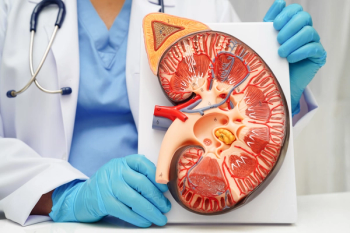
Women Who Receive False Positive Mammography Results Are Less Likely to Attend Follow-Up Screenings
The authors stress that health care providers should explain false positive results to their patients, reassure them that results may be negative, and stress the significance of continued screenings.
According to recent research published in Annals of Internal Medicine, women who received a false positive test result during breast cancer screenings who needed additional biopsies and imaging to confirm findings were less likely to return for follow-up screenings. Abnormal findings on mammograms can lead to women being recalled for additional biopsies and imaging, many of which result in “false positives” and do not result in cancer diagnoses. The investigators note that these false positives may have financial implications for patients while also causing significant emotional stress and anxiety.1
For this study, data on over 3.5 million screening mammograms nationwide performed between 2005 and 2017 on over 1 million patients aged 40 to 73 years without a breast cancer diagnosis were analyzed. Of these screenings, 3,184,482 were deemed “true negatives” and 345.343 were false positives. Mammography results—which consisted of either a true negative result or false positive recall with a recommendation for immediate additional screening only, a short-interval follow-up, or biopsy—were recorded from 1 or 2 screening mammograms.1,2
The investigators evaluated absolute differences in the probability of returning for a screening within 9 to 30 months of false positive result vs true negative screening results, with adjustments made for race, ethnicity, age, time since last mammogram, Breast Cancer Surveillance Consortium registry, and clustering among women and facilities made, if necessary.2
“It is important for women with false-positive results to continue screening every 1 to 2 years,” said lead author Diana Miglioretti, PhD, cancer center researcher and chief of the Division of Biostatistics at UC Davis, in a news release. “Having a false-positive result, especially if it results in a diagnosis of benign breast disease, is associated with an increased risk of being diagnosed with breast cancer in the future.”1
According to the results, approximately 77% of women with a true negative result from a mammogram were more likely to return for their subsequent screening. Women who received a false positive were less likely to attend their follow-up screenings, with approximately 61% returning for their mammogram within 6 months and 67% returning for a biopsy. In addition, women who received 2 screening mammograms within 5 years who had a false positive result on their second were less likely to return for a third screening, regardless of the first screening result.1,2
Further, the investigators also observed that Asian and Hispanic or Latinx women were the least likely to return for future screening mammograms (−20% to −25%) or biopsy (-13% to -14%) following a false positive. The investigators expressed concern that this may further contribute to pre-existing health care disparities.2
“The finding raises concerns about the potential unintended consequence of false-positive results, where women may avoid screening mammograms in the future,” said Miglioretti in the news release.1
For women who may feel anxious about waiting for their screening mammography results, they may be able to receive an on-the-spot interpretation of their mammogram on request. Some facilities, according to the investigators, may provide this service in addition to same-day diagnostic work-up, if there is a suspicious finding noted. The investigators stressed that it is important for health care providers to explain false positive results to their patient to reassure them that a result may be negative while emphasizing the significance of continued screenings.1
According to the investigators, false positive results are somewhat common—notably in younger women—and occur in approximately 10% to 12% of mammograms in women who are 40 to 49 years of age. After 10 years of annual screenings, about 50% to 60% of women can expect to receive at least 1 false positive, and 7% to 12% at least 1 false positive with the recommendation to receive a biopsy. The investigators emphasize that about 10% of the time, additional imaging is necessary to get a better look at what a screening mammogram finds.1,2
“It’s important to understand that most women recalled for additional imaging due to a finding on a screening mammogram do not have breast cancer,” said Miglioretti in the news release. “They should try not to be worried if they are recalled for additional work-up. It is a normal and common part of the screening process.”1
REFERENCES
1. University of California—Davis Health. False-positive mammograms discourage some women from future screenings. News release. September 2, 2024. Accessed September 3, 2024. https://www.eurekalert.org/news-releases/1056018
2. Miglioretti DL, Abraham L, Sprague BL, et al. Association Between False-Positive Results and Return to Screening Mammography in the Breast Cancer Surveillance Consortium Cohort. Ann Intern Med. [Epub 3 September 2024]. doi:10.7326/M24-0123
Newsletter
Stay informed on drug updates, treatment guidelines, and pharmacy practice trends—subscribe to Pharmacy Times for weekly clinical insights.
















































































































































































































